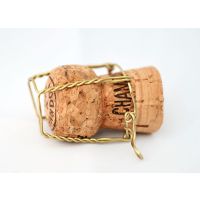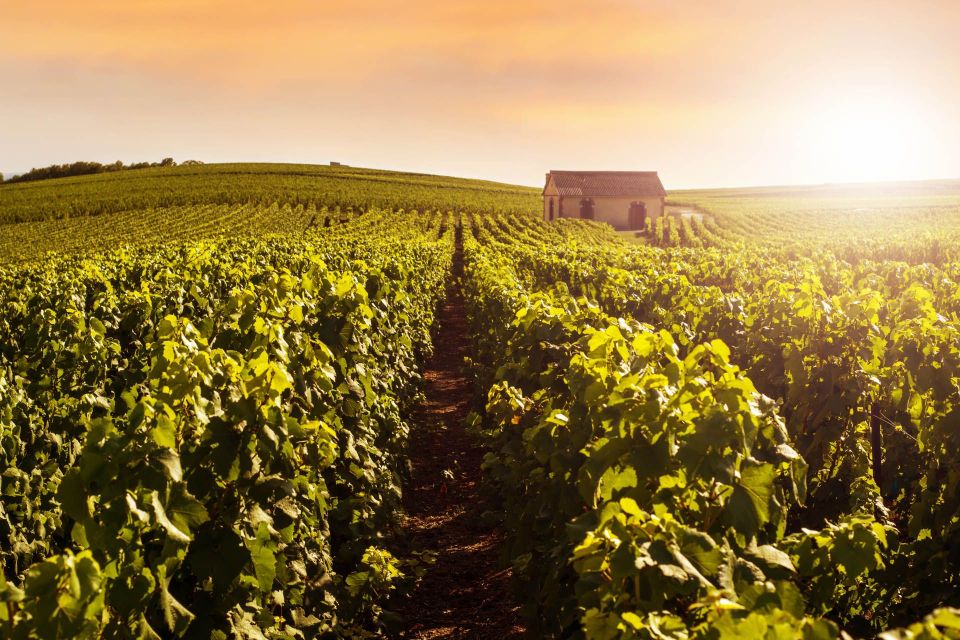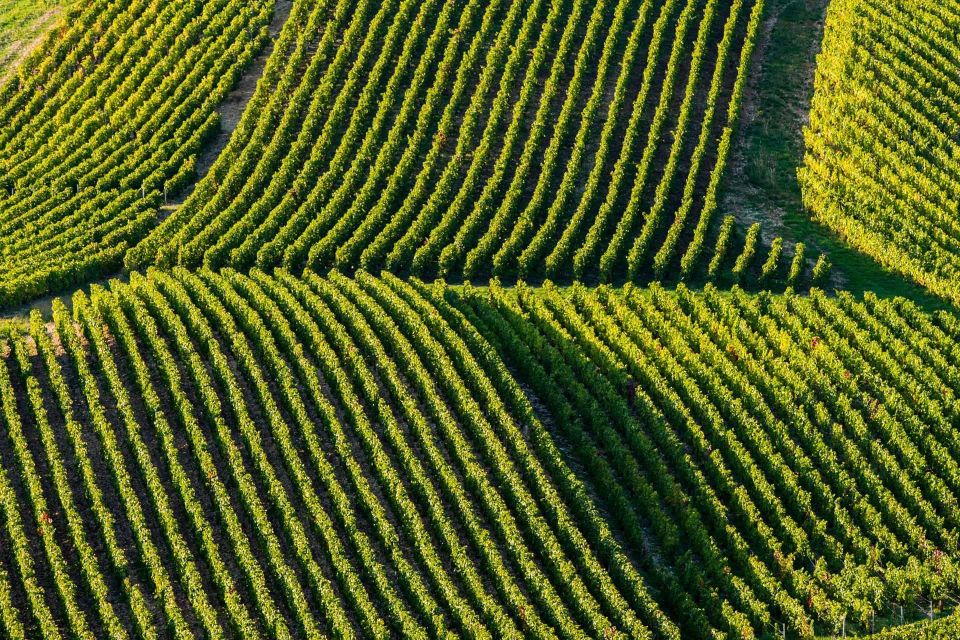Each year from late August to mid-October, Champagne grapes are harvested from the 84,000 acres of vineyards in the AOC terroir. Did you know there are in fact seven main types of grapes grown in the region.
The three main Champagne grapes grown in Champagne that most people know about and that are used in most blends are chardonnay, pinot noir and pinot meunier, but there are another four varieties that can be found within the Champagne wine AOC region: pinot blanc, pinot gris, petit meslier and arbane.
In 1938, it was agreed in the Champagne AOC that these four varieties would no longer be planted due to low vineyard yield and poor disease resistance. However, the grapes from vines planted before 1938 can be used in Champagne production thanks to “grandfather’s rights”, so you’ll still get these varieties in some Champagnes.
Another variety that has been banned is the red gamay. Many fairly assume that the Champagne grape variety is used within the drink. However, this variety actually gained its name because the grapes are thought to look like Champagne bubbles and isn’t used to produce Champagne at all.
Table of Contents:
- What grapes are used for Champagne?
- What grapes are used to make rosé Champagne?
- Impact of climate change on Champagne grapes
- Are Champagne grape varieties used to make other wines?
- So, to summarise...
What grapes are used for Champagne?
1. Chardonnay
Chardonnay grapes account for around 30% of the plantings in Champagne, with around 25,000 acres of chardonnay vines. Chardonnay grapes are characterised by their golden, greenish appearance and their delicate fragrance, with notes of citrus, florals and minerals.
Chardonnay grapes are commonly grown on Kimmeridgian clay soils. The mineral-rich clay and marl-mixed soil often deepen the complexity of the grapes and provide distinctive acidity. This is why Chardonnay grapes are used to produce extremely fine sparkling wines, including Krug Clos du Mesnil 2002 Vintage. It also means that this variety has great longevity, and is a popular choice for other vintage Champagnes.
You’ll most frequently find Chardonnay grapes in Blanc de Blancs and brut Champagnes.
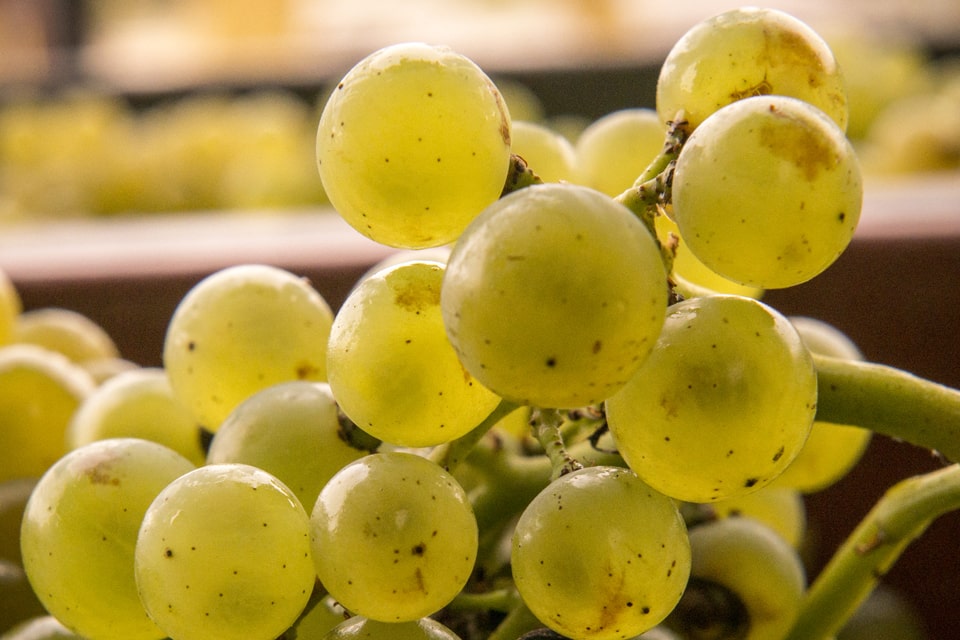
2. Pinot Noir
The pinot noir variety is one of the oldest in France. Records indicate that the grape has been cultivated in the region since 1345. Today, with more than 32,000 acres of vineyards, pinot noir is the most widely planted variety in the Champagne region. Grown mostly in the Côte des Bar region, the cool, chalky soil provides pinot noir grapes with their distinctive taste and strong structure.
Pinot noir is a red grape variety with dark purplish skin that grows in large clusters. Many Blanc de Noir, rosé and brut Champagnes rely on pinot noir grapes such as Cattier Blanc de Noirs Brut NV, Deutz Brut Rosé Champagne and Drappier Brut Nature Champagne, to name just a few. Pinot noir grapes are praised for providing wines with a fine, fruity, herbal aroma.
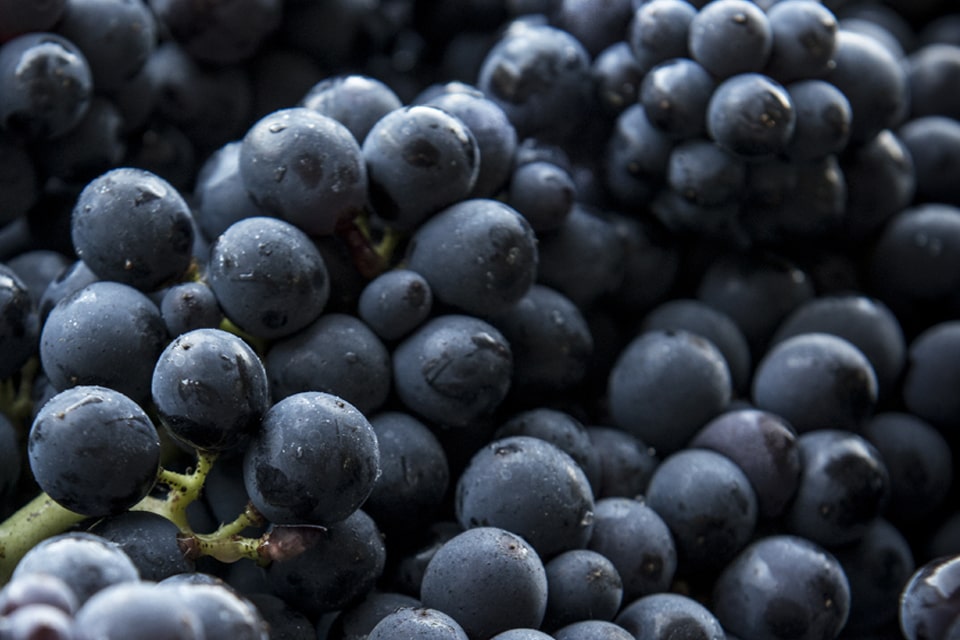
3. Pinot Meunier
The last major component of the Champagne grape trinity is the pinot meunier grape variety. Making up 32% of the region's vineyards, pinot meunier grapes have gained significant popularity in the last few years.
Historically, pinot meunier grapes were used for blending and many Champagne producers did not include this variety on the label. Today, major Champagne houses such as Nyetimber have started to produce 100% meunier Champagnes, providing the variety new respect.
Pinot meunier grapes are a mutation of the pinot noir variety. They are identifiable by their indented leaves with fine white hair that often looks like flour or dust. This red grape provides a berry flavour, deep richness and full body, hence why they were preferred for blending.
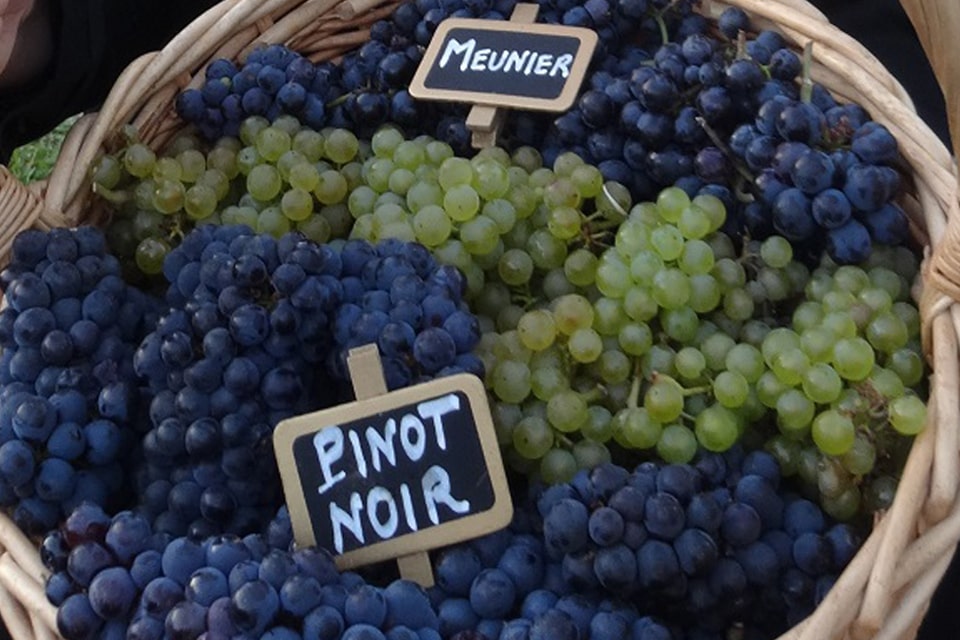
4. Pinot Blanc
Pinot blanc grapes are a variety of white grape that is also related to pinot noir. Hailing from Alsace, there are around 3,050 acres of pinot blanc vines in France.
This variety is notorious for disease and mutation. Growers put this down to pinot blanc’s large berries and the close relation to pinot noir. Because of this, black grapes sometimes grow within the white vines.
Pinot blanc grapes are typically used in fine, dry wines. The low sugar levels provide acidity to the palate, which is why they are generally mixed with other white grape varieties. Their flavour profile consists of florals, honey and green apples.
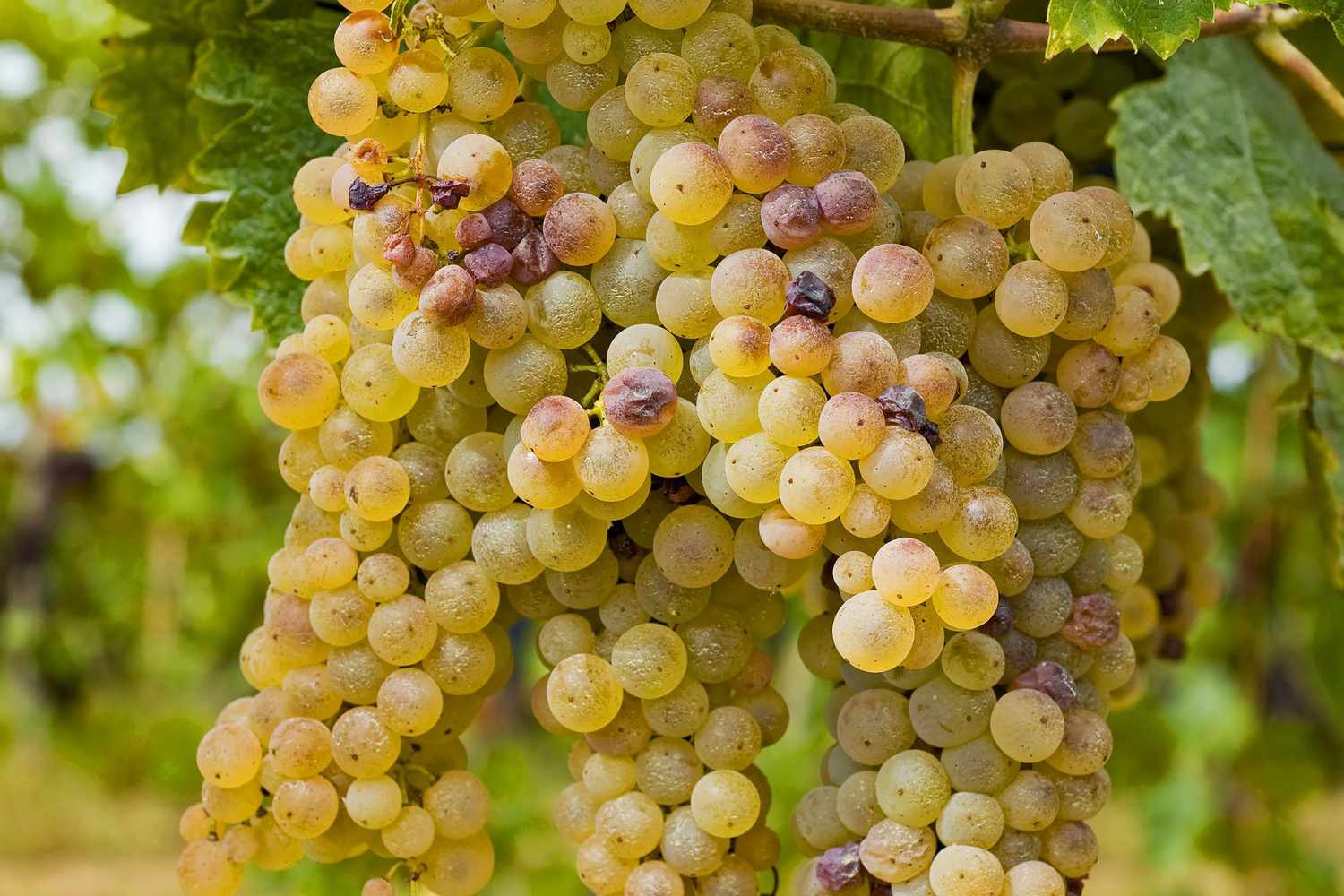
Image courtesy: Foodandwine.com
5. Pinot Gris
Pinot gris grapes are often referred to by the Italian name, pinot grigio. They are a pinkish, brownish mutation of the pinot noir, and are a white grape variety. Pinot gris grapes are hailed for their contribution to light-bodied white wines.
In the Middle Ages, pinot gris grapes were known as Fromenteau and were the variety of choice in winemaking. Even up to 300 years ago, pinot gris made up 50% of the total vineyards in Champagne. Due to their high maintenance requirements, many switched to the more stable pinot noir. Today, this variety makes up 14% of the region's planting surface.
It matures quite early and has high sugar content. The taste profile is sweet and crisp, with flavours of honey and fruit.
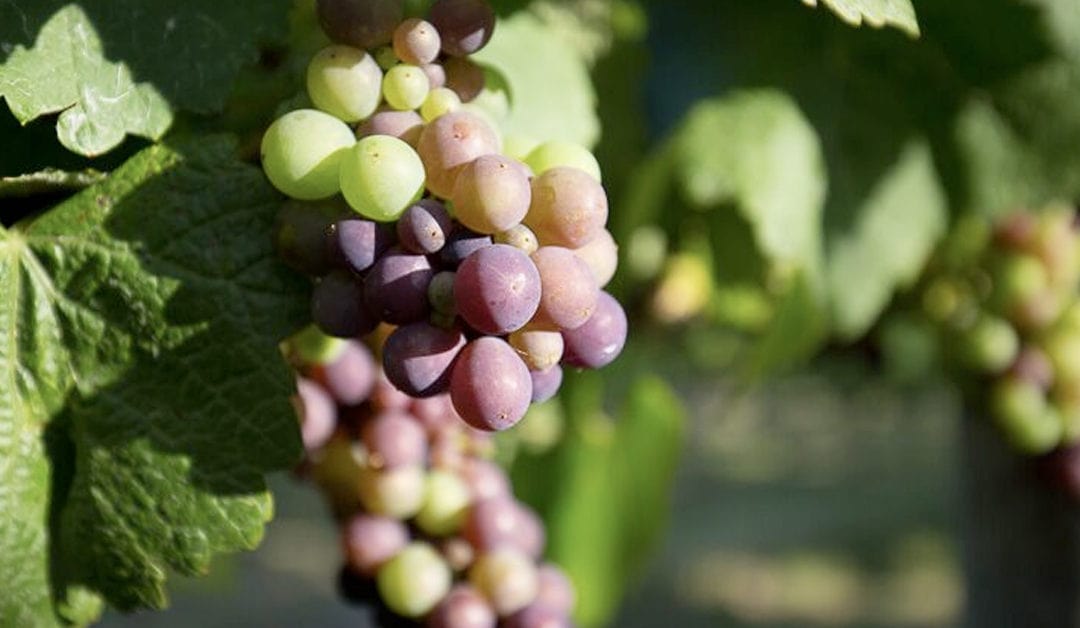
Image courtesy: Holmoakvineyards.com
6. Petit Meslier
Petit meslier grapes are a rare variety that is almost always used for blending. With only a few acres of vines across the entire Champagne region, you’ll mostly find this variety in the Marne Valley region of the AOC. This is due to poor disease resistance and difficult pruning requirements.
Petit meslier grapes are valued for their ability to retain acidity. They are a light-coloured white grape with vegetal flavours, very closely related to chardonnay grapes.
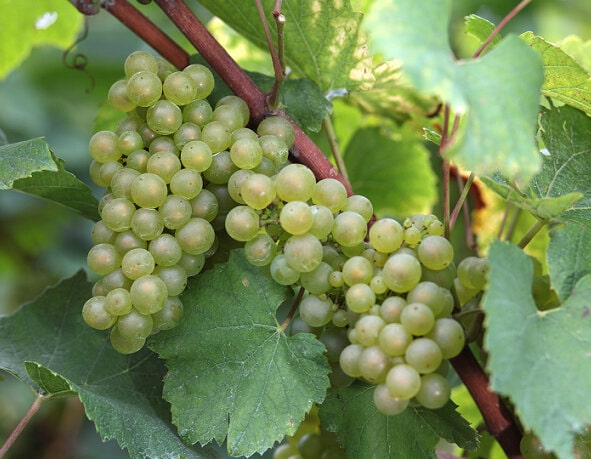
Image courtesy: Auxbulles.at
7. Arbane
Another rare variety, there are currently less than 2.5 acres of arbane grapes in all of the Champagne region. You’ll find the last remaining arbane vines in the Côte de Bars region. The arbane grape typically has a very low yield and is very prone to downy mildew.
These light yellow grapes are typically blended with chardonnay, pinot noir and pinot meunier varieties. They are mild in flavour and bring a light, nutty, herbally taste to Champagne.
You’ll find arbane grape varieties in extra brut Champagnes due to their punchy flavour.
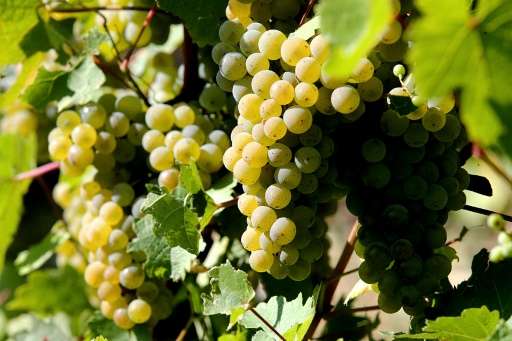
Image courtesy: Phys.org
What grapes are used to make rosé Champagne?
Rosé Champagnes are made using the same three grape varieties as traditional Champagne: chardonnay, pinot noir and pinot meunier. However, it is the production method that changes the final outcome.
Typically, rosé is produced by macerating black-skinned grapes until the pinkish, reddish colour is obtained. The most common method for making rosé Champagne is blending red and white grape varieties together.
Impact of climate change on Champagne grapes
The rising temperatures in the Champagne wine region are a telltale sign of climate change. As a result, according to the Le Comité Champagne, growers are noticing a reduction in water balance, and an increase in natural alcohol strength per volume. Champagne producers are acting to tackle their carbon footprint and to preserve Champagne’s history and flavour.
The increase in heat, extra sun exposure and earlier harvest all combine to reduce the acid levels of the grapes used in Champagne and bear sweeter fruit. In order to retain the dry, reserved flavours that many Champagne drinkers know and love, winemakers are reducing the sugar dosage in production. In some cases, they are eliminating it completely.
Are Champagne grape varieties used to make other wines?
If you’re a wine lover, you’ll probably recognise the name of these grape varieties by their nominated wines. For example, you’ll find chardonnay grapes in chardonnay wines. Pinot gris grapes are most commonly found in Italian pinot grigio wines. The same goes for pinot noir varieties.
As for the four less commonly used Champagne grape varieties, due to their rarity, they are very rarely used as the standalone base of a wine.
So, to summarise…
Champagne houses have been perfecting their recipes for hundreds of years, with vines that were also planted many generations ago. The production of sparkling wine is also one steeped in rich history. To brush up on your Champagne-making knowledge, read our blog How is Champagne made? Or, for a full overview of the history of Champagne and the different styles of the delightful drink, check out our comprehensive Champagne guide.


